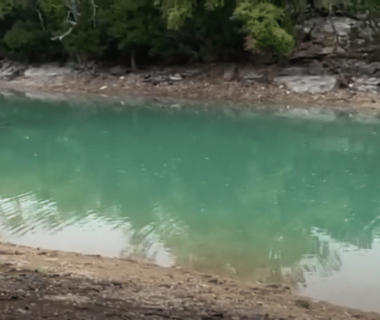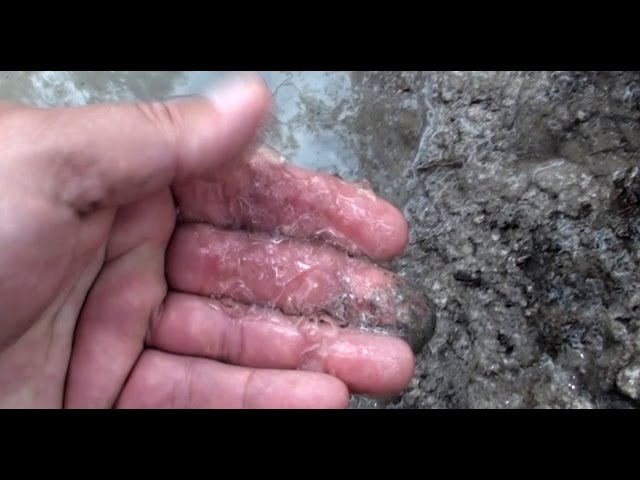Dealing with a leak in your pond can be a frustrating and worrying experience. Not only can it cause damage to the surrounding environment, but it can also be harmful to the aquatic life that inhabits the pond. However, there are steps you can take to identify and stop a pond leak, ensuring that your pond remains a healthy and beautiful feature of your landscape. In this comprehensive guide, we will explore the common causes of pond leaks and provide practical solutions to stop them.
Identifying the Leak
The first step in stopping a pond leak is to identify the source of the problem. Leaks can occur due to a variety of reasons, including punctures, tears, or cracks in the pond liner, as well as damage to the plumbing or fittings. To pinpoint the location of the leak, you can perform a simple water level test. Fill the pond to its normal level and mark the water line. Monitor the water level over a few days, and if it drops significantly, it is likely that there is a leak. Inspect the pond carefully to look for any signs of damage or areas where water is escaping.
Common Causes of Pond Leaks
Understanding the common causes of pond leaks can help you take the appropriate measures to address the issue. Some of the typical culprits behind pond leaks include:
- Pond Liner Damage: Punctures, tears, or deterioration in the pond liner can lead to leaks.
- Settling Soil: Shifting or settling of the soil around the pond can cause stress on the liner, resulting in leaks.
- Sharp Objects: Rocks, roots, or other sharp objects can puncture the pond liner, leading to leaks.
- Freezing and Thawing: Extreme temperature changes can cause the pond liner to expand and contract, potentially causing damage and leaks.
- Plumbing Issues: Faulty or damaged plumbing, fittings, or connections can result in water loss from the pond.
Stopping the Leak
Once you have identified the source of the leak, it’s time to take action to stop it and restore the integrity of your pond. The approach to stopping the leak will depend on the specific cause, but here are some general strategies you can employ:
Repairing The Pond Liner
If the leak is due to damage to the pond liner, you can patch the affected area using a suitable pond liner patch kit. Clean the area around the leak, dry it thoroughly, and apply the patch according to the manufacturer’s instructions. It’s essential to ensure that the patch is securely in place to prevent further leaks.
Adjusting The Soil
If the soil around the pond has settled or shifted, causing stress on the liner, you may need to adjust the soil to relieve the pressure. Carefully lift and support the liner, then add or remove soil as needed to create a stable and supportive base for the pond liner.
Removing Sharp Objects
To prevent further damage to the pond liner, carefully remove any sharp objects such as rocks, roots, or debris that may be in contact with the liner. Creating a smooth and protective layer between the liner and the surrounding environment can help prevent future leaks.
Protecting Against Temperature Changes
To mitigate the impact of freezing and thawing on the pond liner, consider using insulation or protective materials to shield the liner from extreme temperature fluctuations. This can help minimize the risk of damage and leaks caused by temperature-related stress.
Inspecting And Repairing Plumbing
If the leak is attributed to plumbing issues, carefully inspect the plumbing, fittings, and connections for any signs of damage or deterioration. Replace any faulty components and ensure that the plumbing system is properly sealed and functioning as intended to prevent water loss from the pond.

Credit: www.youtube.com

Credit: lonestarbarite.com
Preventing Future Leaks
Once you have successfully stopped the current leak, it’s important to take measures to prevent future leaks and preserve the integrity of your pond. Here are some proactive steps you can take to minimize the risk of future leaks:
Maintain Regular Inspections
Regularly inspect your pond for any signs of damage, wear, or stress on the liner. By catching potential issues early, you can address them before they escalate into significant leaks.
Protect The Liner
Use protective underlayment or padding beneath the pond liner to create a buffer against sharp objects and abrasive materials. This additional layer of protection can help extend the lifespan of the liner and reduce the risk of punctures or tears.
Monitor Soil Stability
Keep an eye on the soil around the pond to ensure that it remains stable and supportive of the liner. Address any settling or shifting of the soil promptly to prevent undue strain on the pond liner.
Winterize The Pond
Prior to the onset of freezing temperatures, take steps to winterize your pond to minimize the impact of temperature fluctuations on the liner. This may include adjusting the water level, insulating exposed plumbing, and protecting the pond from ice formation.
Professional Assessment
If you encounter persistent or recurring leaks despite your efforts to address the issue, consider seeking the expertise of a professional pond maintenance or repair service. A professional assessment can help identify underlying issues and provide tailored solutions to prevent future leaks.
Conclusion
Stopping a pond leak requires a systematic approach that involves identifying the source of the leak, taking targeted measures to address the specific cause, and implementing proactive strategies to prevent future leaks. By understanding the common causes of pond leaks and applying the appropriate solutions, you can safeguard the integrity of your pond and enjoy its beauty for years to come.
Remember, prompt action and regular maintenance are key to preserving the health and functionality of your pond, ensuring that it remains a thriving ecosystem and a stunning focal point in your outdoor space.




